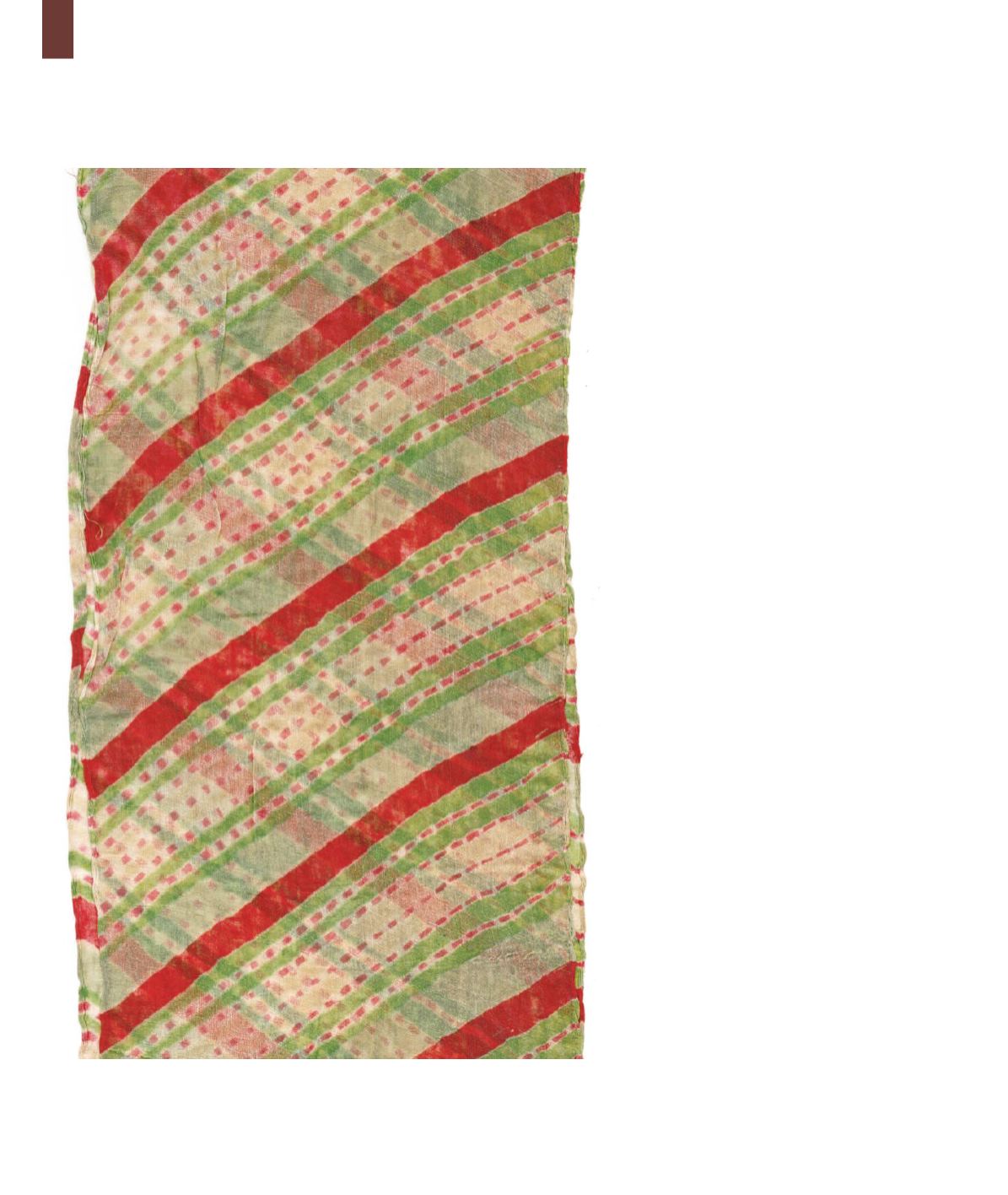
88
brightly coloured striped waves or bands that
appear like waves of water. When worn, a
Lehariya saree has a charming rippled effect.
There are different styles of Lehariya such as
Chatai Lehariya
where the stripes are broader
than those of basic Lehariya;
Phuldar Lehariya
where the field of the saree has Lehariya and
the
pallav
or end-panel has Bandhani; and
Bawan Patta Lehariya
where there is a repeat
of eight stripes in different colours that run
throughout the fabric. The width of each stripe
is approximately one inch and can be varied.
Mothara is another style of Lehariya where
the striped-dyed cloth is subsequently resist
tied and dyed by rolling it from the adjacent
side. The process creates diagonal lines in two
directions resulting in a pattern of checks. For
a zig-zag pattern the fabric is folded with pleats,
tied and then dyed. Care has to be taken while
tying the fabric. If chiffon or tussar are tied too
tightly the fabric tears. On the other hand, for
a cotton fabric the threads have to be tied very
tightly.
The Art of Dyeing
Rajasthan and Gujarat are the home of the tie-
dye technique. The tie-dye in Rajasthan stands
out for its striking colours such as green, red,
blue, purple and other dark colours. These
colours have traditionally been used to create
tie-dye patterns so that the wearer of these
textiles and garments instantly stands out in
the dry desert landscape. Apparels of tie-
dye fabric are worn by members of different
communities. The tie-dye textiles created for
or worn by Hindus feature a variety of motifs
such as animals, birds, flowers, the
ambi
motif
and the human form. It is generally created
in yellow, orange, red, pink, and maroon on
a coloured background. On the other hand,
tie-dye textiles created for Muslims feature
non-figural patterns such as plant forms
and geometric patterns. These are generally
rendered in green, pink, blue, black, brown, and


